
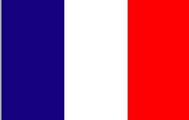 |
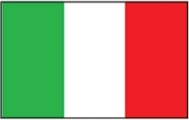 |
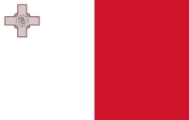 |
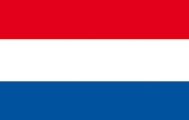 |
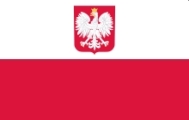 |
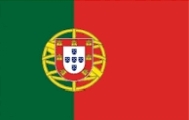 |
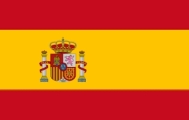 |
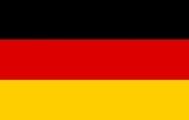 |
FR |
IT |
MT |
NL |
PL |
PT |
ES |
DE |
Cracow - Poland's cultural capital 1. part
by Lars Haagen Petersen

Cracow is one of the most beautiful cities in Europe. It's an ancient city in southern Poland near the Slovakian border. Cracow which lies near the river Vistula (Wisla) has about 750.000 citizens and is the third largest city in Poland.
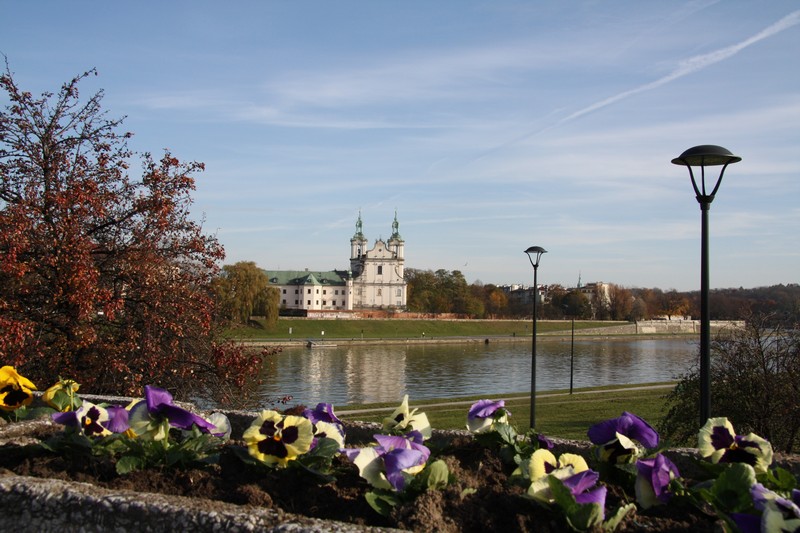
The river Vistula and the St. Stanislaus church (Kosciól na Skalce) – November 2010
Kraków has traditionally been
one of the leading centres of Polish academic, cultural and artistic life and is
one of Poland's most important economic centres.
Wanted
The city has grown to Poland's second most important city. With the
establishment of new universities and cultural venues at the emergence of the
Second Polish Republic and throughout the 20th century, Kraków reaffirmed its
role as a major national academic and artistic center.
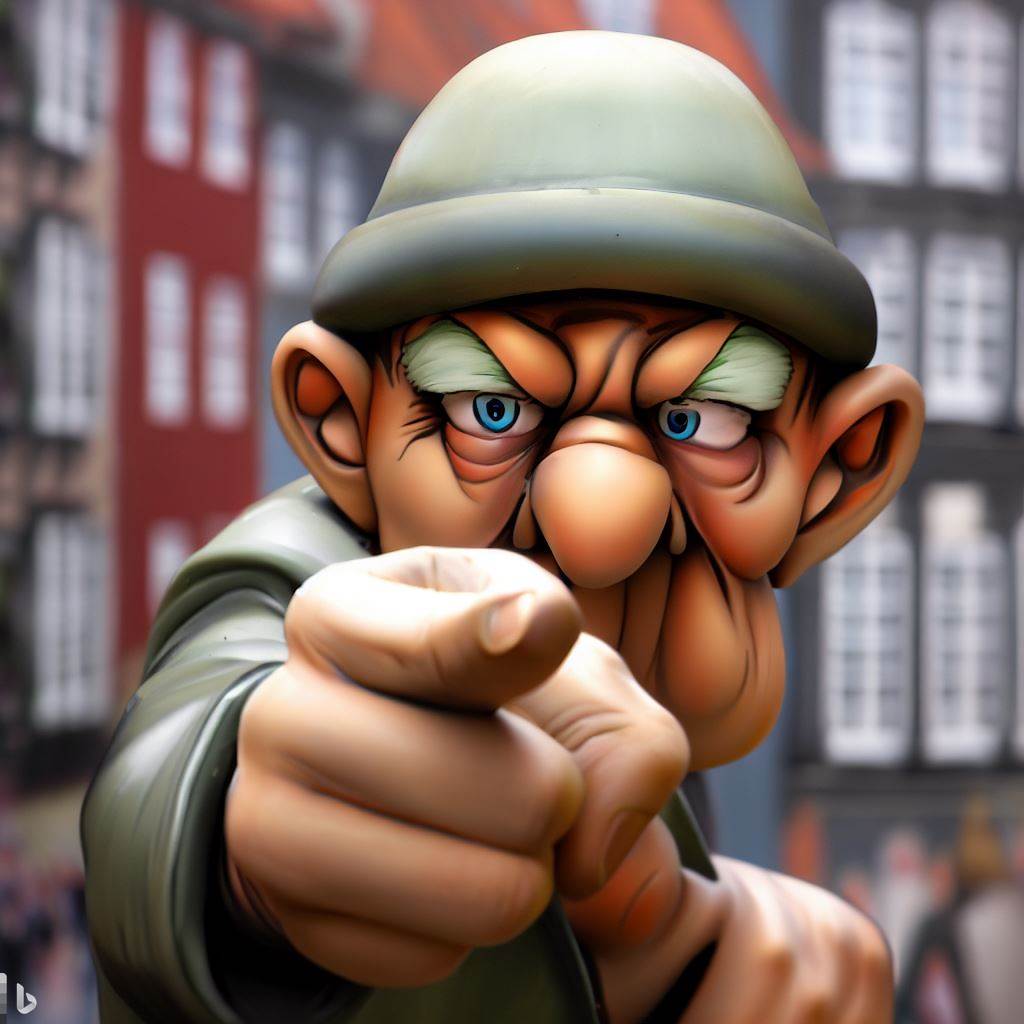
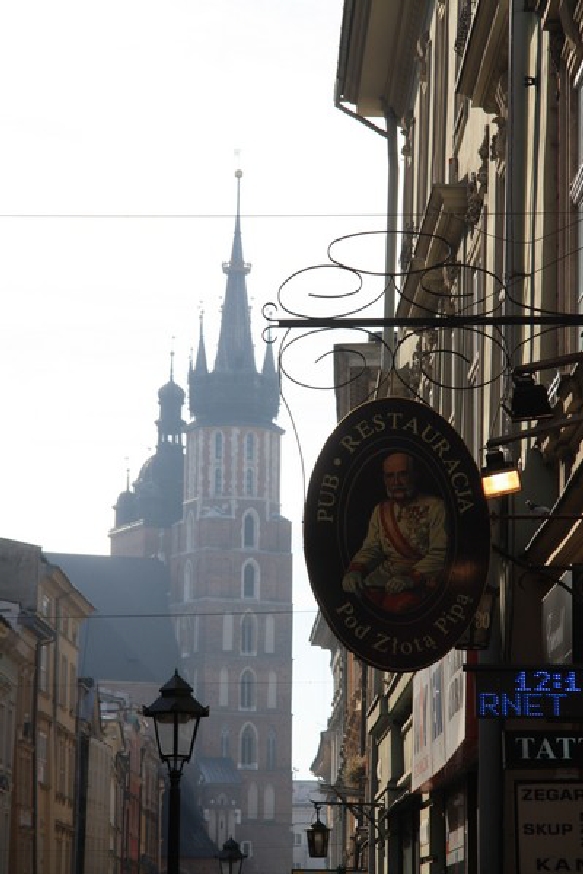
The Gothic towers of St. Mary's Basilica - November 2010
St. Mary's Basilica is a Brick Gothic style church located next
to the Main Market Square in Kraków, Poland. The church was built in the 14th
century and its foundations date back to the early 13th century, serving as one
of the best examples of Polish Gothic architecture. It is 80 m high and is
particularly famous for its wooden altar carved by Veit Stoss. Some of its
monumental polychrome murals were designed by Poland's leading history painter,
Jan Matejko (1898-1891). In 1978, it entered the UNESCO World Heritage List
together with the historic center of Kraków.
Every hour, 24 hours a day, 365 days a year, a trumpet signal - called "Hejnał
mariacki" - is played from the top of Saint Mary's tallest tower. The plaintive
tune is played to commemorate a famous 13th-century trumpeter who was shot in
the throat while sounding the alarm before a Mongol attack on the city.
Saint Mary's Basilica also served as an architectural model for many of the
churches that were later built, e.g. abroad, especially churches such as Saint
Michael's and Saint John Cantius in Chicago, are designed in the Polish
cathedral style.
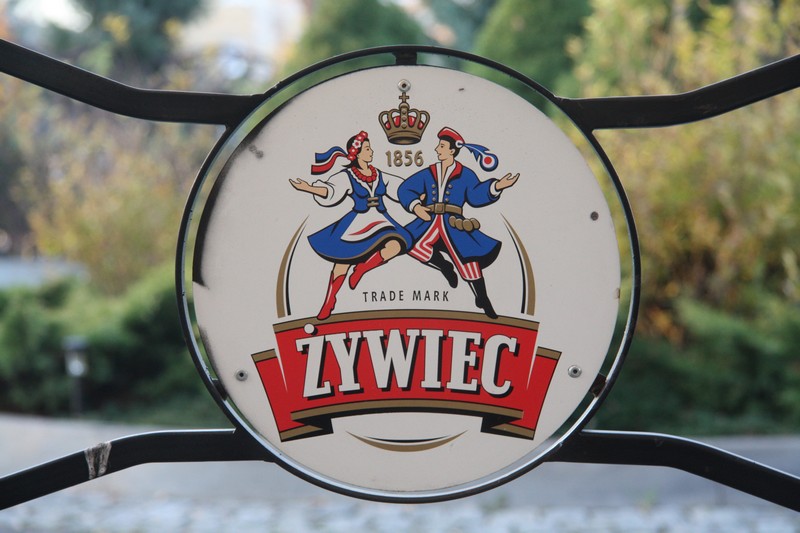
The famous Polish brewery Zywiec has brewed beer since 1856, but is now owned primarily by shareholders behind the Dutch brewery Heineken - November 2010.
Pope John Poul II poster – November 2010
In 1978—the same year UNESCO placed Kraków on the list of World Heritage the archbishop of Kraków, was elevated to the papacy as Pope John Paul II, the first non-Italian pope in 455 years and the first ever Slavic pope.

Rynek Główny - Igor Mitoraj's sculpture – October 2010
Rynek Główny is a spacious marked square in the city centre surrounded by historical townhouses, palaces and churches. The centre of the square is dominated by the Sukiennice (Cloth Hall). On one side of the Sukiennice is the town hall tower, on the other the Church of St. Wojciech (St. Adalbert's) and Adam Mickiewicz Monument. Rising above the square are the Gothic towers of St. Mary's Basilica.
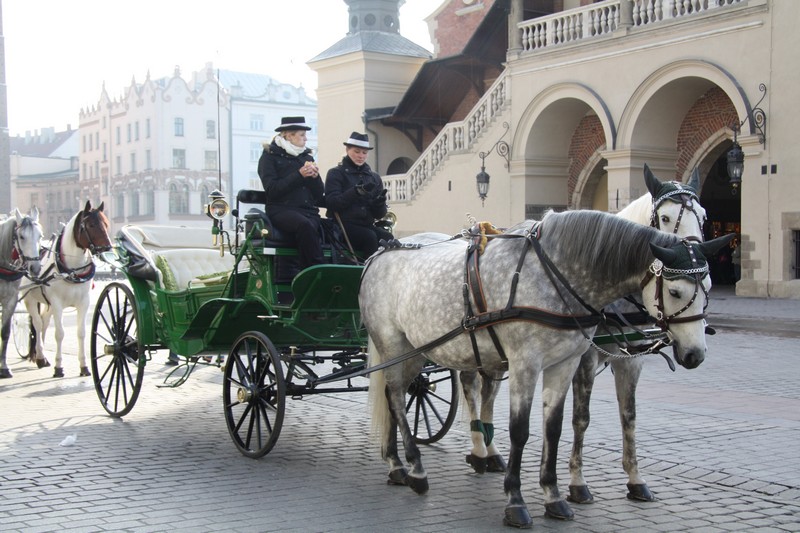
Rynek Główny – November 2010
|
The picture down under is taken inside the Sukiennice |
|
The picture to the left is from Rynek Główny The center of the square is dominated by the Sukiennice (Cloth Hall). |
|
|
The picture to the right is a flower "shop" near the Sukiennice |
|
The pictures are from the city centre - Rynek Główny - November 2010

From Planty park - November 2010
Planty Park is one of the
largest city parks in Kraków and surrounds the Stare Miasto (Old Town), where
the medieval city walls used to stand until the early 19th century. The park has
an area of 21 ha and a length of 4 km. It consists of a chain of thirty smaller
gardens designed in varied styles and adorned with numerous monuments and
fountains. There are over twenty statues of noble historical figures in the
park, including monuments to Nicolaus Copernicus, Jan Matejko, Queen Jadwiga and
King Wladyslaw II Jagiello.
The park forms a scenic and popular footpath, which in the summer is surrounded
by stalls of all kinds, which at the same time is a cool and shady refuge from
the nearby busy streets. Most of the historic sites of Old Kraków are located
within the Planty park belt along the Royal Road, which crosses the park from
the medieval suburb of Kleparz - through the Florian Gate - at the northern
flank of the old city walls.
The historic Wawel Castle on Wawel Hill, adjacent to the river Vistula, forms
the southernmost border of Planty. The greenbelt was established in place of the
medieval walls between 1822-1830 as part of the urban development projects to
preserve the concept of a "garden city".

Planty park area lies like a green oasis all around the old part of the city and protects against the noisy traffic from the outside world - November 2010.
Click on the 3 pictures to enlarge them.
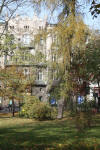 |
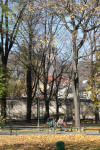 |
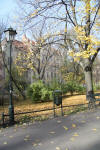 |
|
|
|
|
From
Planty
park - November 2010
Other fine destinations
Ni breve til geheimearkivar m.m. C. F
Wegener:
